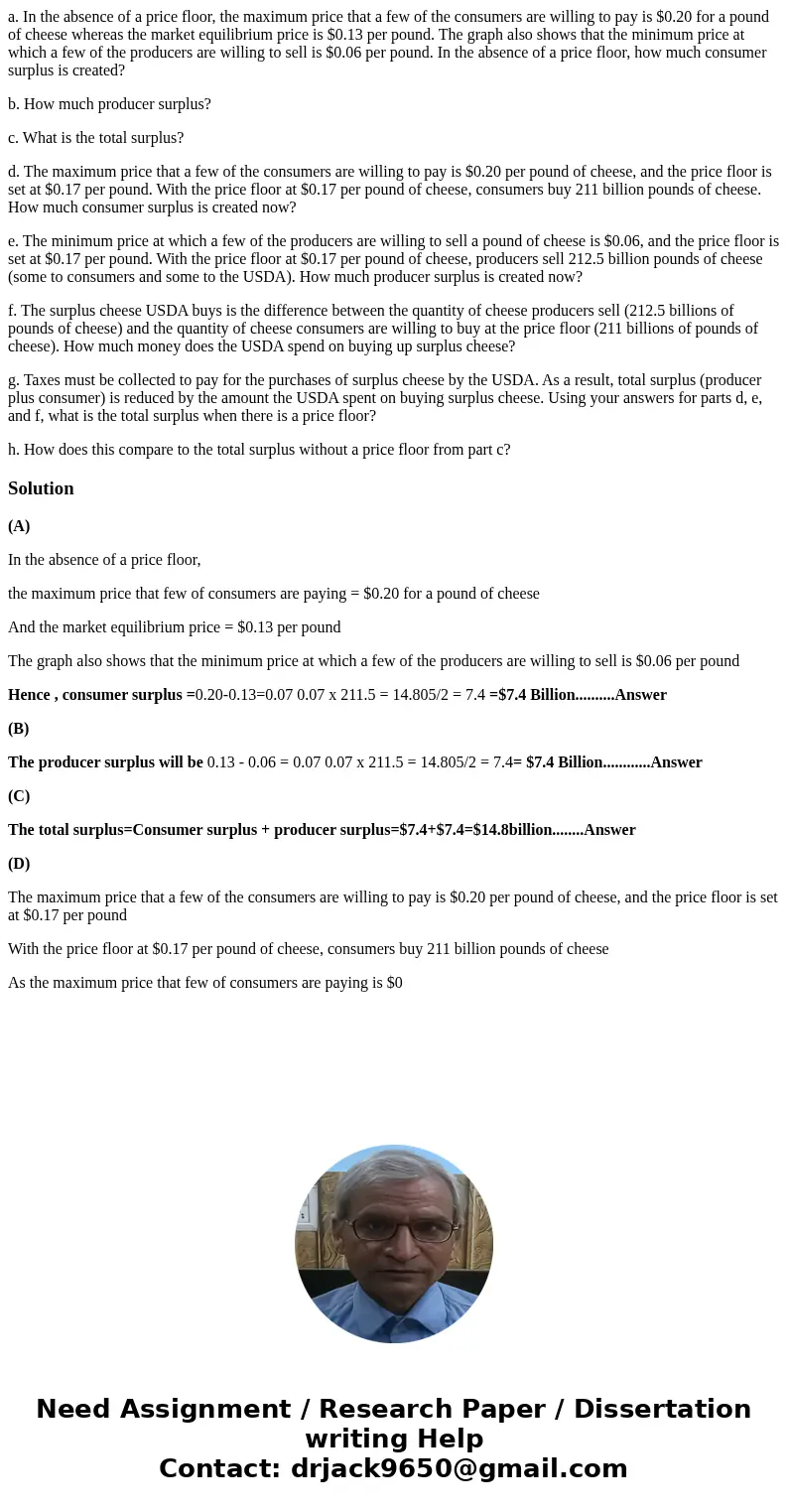a In the absence of a price floor the maximum price that a f
a. In the absence of a price floor, the maximum price that a few of the consumers are willing to pay is $0.20 for a pound of cheese whereas the market equilibrium price is $0.13 per pound. The graph also shows that the minimum price at which a few of the producers are willing to sell is $0.06 per pound. In the absence of a price floor, how much consumer surplus is created?
b. How much producer surplus?
c. What is the total surplus?
d. The maximum price that a few of the consumers are willing to pay is $0.20 per pound of cheese, and the price floor is set at $0.17 per pound. With the price floor at $0.17 per pound of cheese, consumers buy 211 billion pounds of cheese. How much consumer surplus is created now?
e. The minimum price at which a few of the producers are willing to sell a pound of cheese is $0.06, and the price floor is set at $0.17 per pound. With the price floor at $0.17 per pound of cheese, producers sell 212.5 billion pounds of cheese (some to consumers and some to the USDA). How much producer surplus is created now?
f. The surplus cheese USDA buys is the difference between the quantity of cheese producers sell (212.5 billions of pounds of cheese) and the quantity of cheese consumers are willing to buy at the price floor (211 billions of pounds of cheese). How much money does the USDA spend on buying up surplus cheese?
g. Taxes must be collected to pay for the purchases of surplus cheese by the USDA. As a result, total surplus (producer plus consumer) is reduced by the amount the USDA spent on buying surplus cheese. Using your answers for parts d, e, and f, what is the total surplus when there is a price floor?
h. How does this compare to the total surplus without a price floor from part c?
Solution
(A)
In the absence of a price floor,
the maximum price that few of consumers are paying = $0.20 for a pound of cheese
And the market equilibrium price = $0.13 per pound
The graph also shows that the minimum price at which a few of the producers are willing to sell is $0.06 per pound
Hence , consumer surplus =0.20-0.13=0.07 0.07 x 211.5 = 14.805/2 = 7.4 =$7.4 Billion..........Answer
(B)
The producer surplus will be 0.13 - 0.06 = 0.07 0.07 x 211.5 = 14.805/2 = 7.4= $7.4 Billion............Answer
(C)
The total surplus=Consumer surplus + producer surplus=$7.4+$7.4=$14.8billion........Answer
(D)
The maximum price that a few of the consumers are willing to pay is $0.20 per pound of cheese, and the price floor is set at $0.17 per pound
With the price floor at $0.17 per pound of cheese, consumers buy 211 billion pounds of cheese
As the maximum price that few of consumers are paying is $0

 Homework Sourse
Homework Sourse